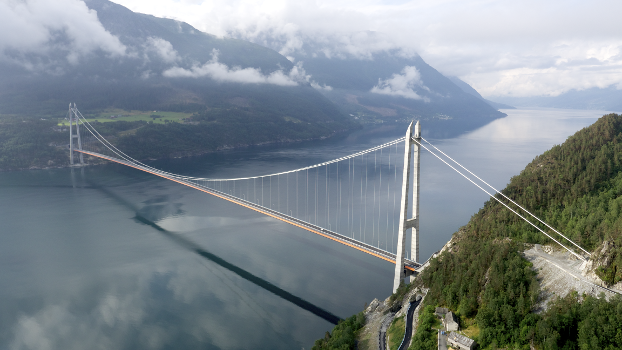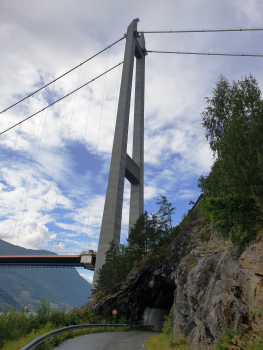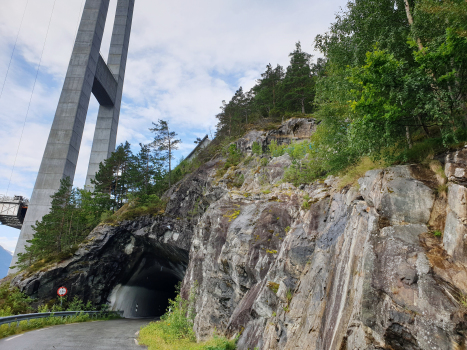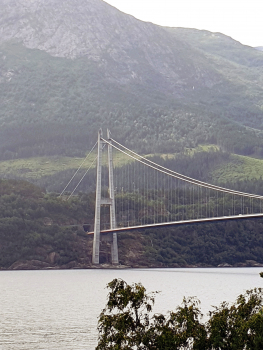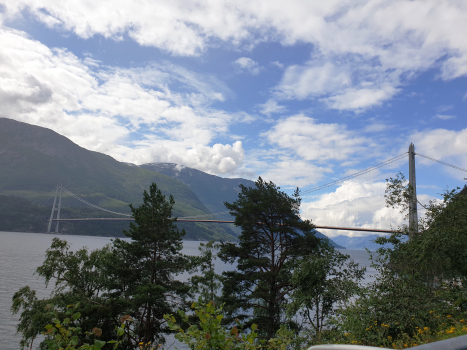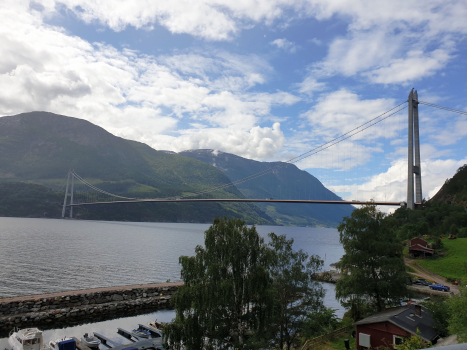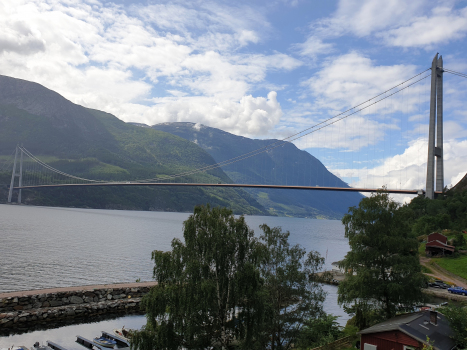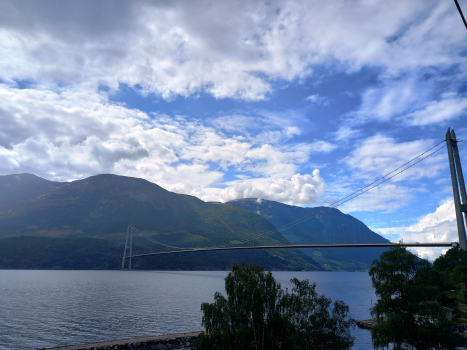General Information
| Name in local language: | Hardangerbrua |
|---|---|
| Beginning of works: | February 2009 |
| Completion: | 17 August 2013 |
| Status: | in use |
Project Type
| Structure: |
Single-span two-tower suspension bridge |
|---|---|
| Function / usage: |
Road bridge |
| Material: |
Steel bridge |
| Plan view: |
Structurae Plus/Pro - Subscribe Now! |
| Support conditions: |
for registered users |
| Construction method: |
Structurae Plus/Pro - Subscribe Now! |
| Material: |
Structurae Plus/Pro - Subscribe Now! |
| Secondary structure(s): |
Structurae Plus/Pro - Subscribe Now! |
| Construction method: |
pylons: Climbing formwork |
Location
| Location: |
Vestland, Norway |
|---|---|
| Connects to: |
Bu Tunnel (2013)
Vallavik Tunnel (1985) |
| Coordinates: | 60° 29' 4.05" N 6° 49' 22.88" E |
| Coordinates: | 60° 28' 24.87" N 6° 50' 10.97" E |
Technical Information
Dimensions
| main span | 1 310 m | |
| total length | 1 380 m | |
| clearance | 55 m | |
| number of lanes | 2 | |
| deck | width | 20 m |
| pylons | height | 200 m |
Cost
| cost of construction | Norwegian krone 1 800 000 000 |
Materials
| deck of main span |
steel
|
|---|---|
| pylons |
reinforced concrete
|
Case Studies and Applied Products
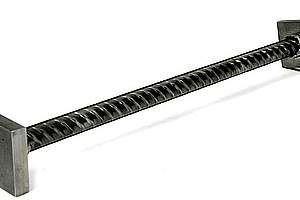
HRC 100 & 200 Series T-headed reinforcement
T-headed rebar is common reinforcing steel with a small steel plate attached to one or both ends of the bar. The T-head works as anchoring device as an alternative to hooks or bends. The generic term for T-heads is "mechanical anchoring ... [more]
Chronology
| 17 August 2013 | Opened to traffic |
|---|
Excerpt from Wikipedia
The Hardanger Bridge (Norwegian: Hardangerbrua) is a suspension bridge across the Eidfjorden branch off of the main Hardangerfjorden in Vestland county, Norway. The bridge connects the municipalities of Ullensvang and Ulvik. It replaced a ferry connection between Bruravik and Brimnes, and thereby shortens the driving time between Oslo and Bergen. It is the longest suspension bridge in Norway.
Construction
The bridge was approved for building by the Norwegian Parliament on February 28, 2006, and construction began on February 26, 2009. While the bridge was engineered by the Norwegian Public Roads Administration, the construction was done by MT Højgaard. The project had a budget of 2.3 billion kr (€290 million) and more than half of this will be paid by toll and saved ferry subsidies. The Administration is considering a different route over a future bridge as the main connection between East and West.
The bridge is 1,380 metres (4,530 ft) long, with a main span of 1,310 metres (4,300 ft). The maximum deck height is 55 metres (180 ft) and the towers reach 200 metres (660 ft) above sea level. There are two driving lanes for cars with an 80 kilometres per hour (50 mph) speed limit, and a separate lane for pedestrians and cyclists. The deck height means that the largest cruise ships cannot reach the inner Hardangerfjord any more.
The traffic predicted for the bridge was estimated to be 2000 vehicles per day. The opening of the bridge took place on 17 August 2013.
The main span is one of the longest suspension bridge spans in the world. It is also the longest tunnel to tunnel suspension bridge in the world. On the south end of the bridge, cars immediately enter the 1.2-kilometre (0.75 mi) Bu Tunnel that goes under the village of Bu, while on the north side of the bridge, cars immediately enter the 7.5-kilometre (4.7 mi) Vallavik Tunnel which includes a 500-metre (1,600 ft) long segment to a roundabout inside the tunnel. At the roundabout, cars can take another 500-metre (1,600 ft) long tunnel that leads to Ulvik or they can take a 7-kilometre (4.3 mi) long tunnel to Granvin.
Text imported from Wikipedia article "Hardanger Bridge" and modified on May 11, 2022 according to the CC-BY-SA 4.0 International license.
Participants
Relevant Web Sites
Relevant Publications
- (2007): Computer Aided Design & Erection of Long Suspension Bridges. Presented at: IABSE Symposium: Improving Infrastructure Worldwide, Weimar, Germany, 19-21 September 2007, pp. 386-389.
- (2021): Data Set from Long-Term Wind and Acceleration Monitoring of the Hardanger Bridge. In: Journal of Structural Engineering (ASCE), v. 147, n. 5 (May 2021), pp. 04721003.
- (2021): Experiences from the wind-tunnel testing of the Hardanger Bridge section model. Presented at: IABSE Congress: Resilient technologies for sustainable infrastructure, Christchurch, New Zealand, 3-5 February 2021, pp. 335-342.
- Fjord forwards. In: Bridge Design & Engineering, v. 15, n. 54 (1st Quarter 2009), pp. 14.
- (2006): Green light for Norway's longest suspension bridge. In: Bridge Update, n. 58 (March 2006), pp. 1.
- About this
data sheet - Structure-ID
20019922 - Published on:
11/03/2006 - Last updated on:
24/09/2023

